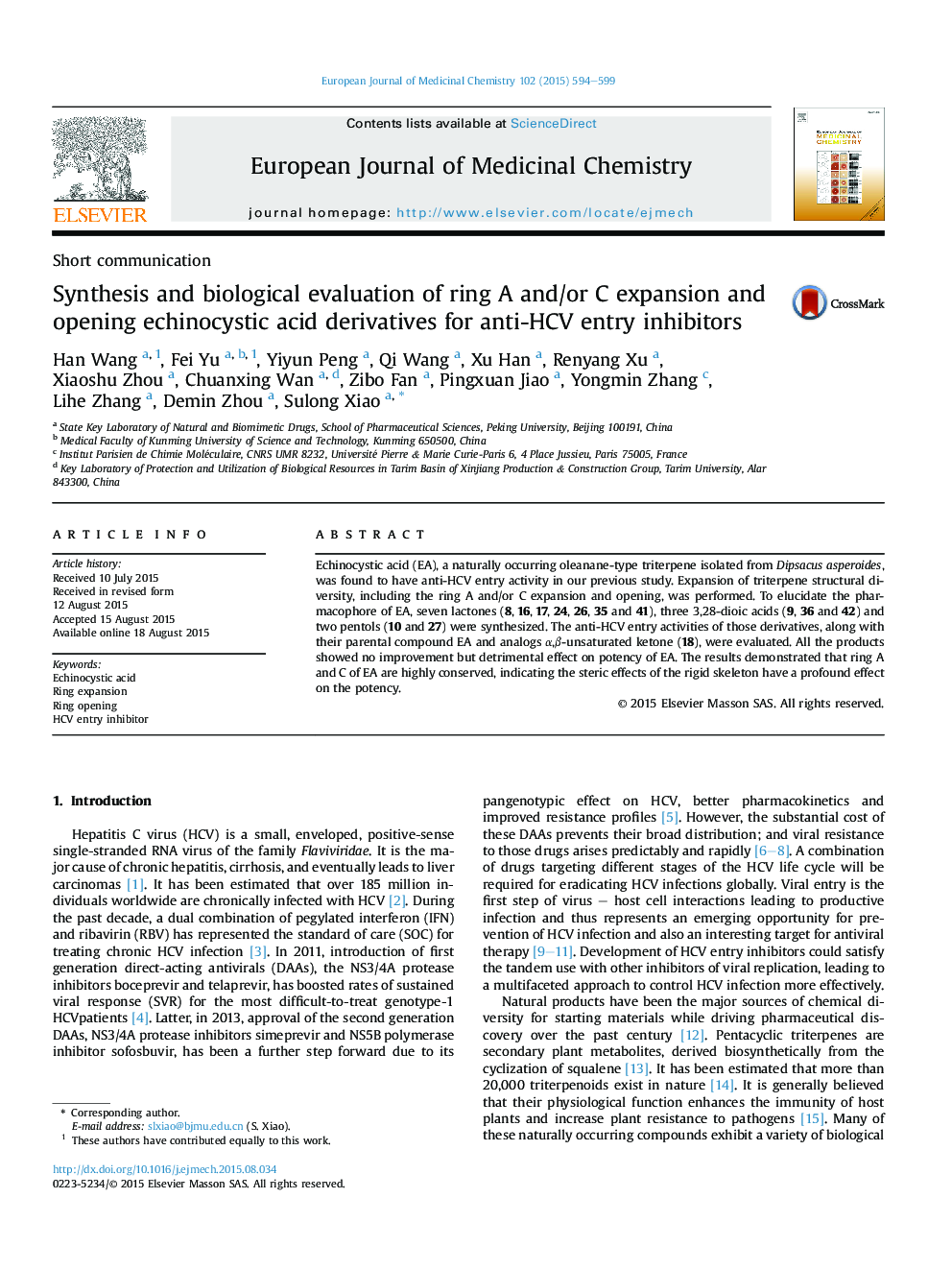| Article ID | Journal | Published Year | Pages | File Type |
|---|---|---|---|---|
| 1397267 | European Journal of Medicinal Chemistry | 2015 | 6 Pages |
•Triterpene natural products are proposed as a new class of compounds for blocking HCV entry.•The structure diversity of echinocystic acid was expanded via ring A and/or C expansion/opening reaction.•Ring A and C are highly conserved, any modification might significantly decrease or even eliminate its activity.
Echinocystic acid (EA), a naturally occurring oleanane-type triterpene isolated from Dipsacus asperoides, was found to have anti-HCV entry activity in our previous study. Expansion of triterpene structural diversity, including the ring A and/or C expansion and opening, was performed. To elucidate the pharmacophore of EA, seven lactones (8, 16, 17, 24, 26, 35 and 41), three 3,28-dioic acids (9, 36 and 42) and two pentols (10 and 27) were synthesized. The anti-HCV entry activities of those derivatives, along with their parental compound EA and analogs α,β-unsaturated ketone (18), were evaluated. All the products showed no improvement but detrimental effect on potency of EA. The results demonstrated that ring A and C of EA are highly conserved, indicating the steric effects of the rigid skeleton have a profound effect on the potency.
Graphical abstractFigure optionsDownload full-size imageDownload as PowerPoint slide
